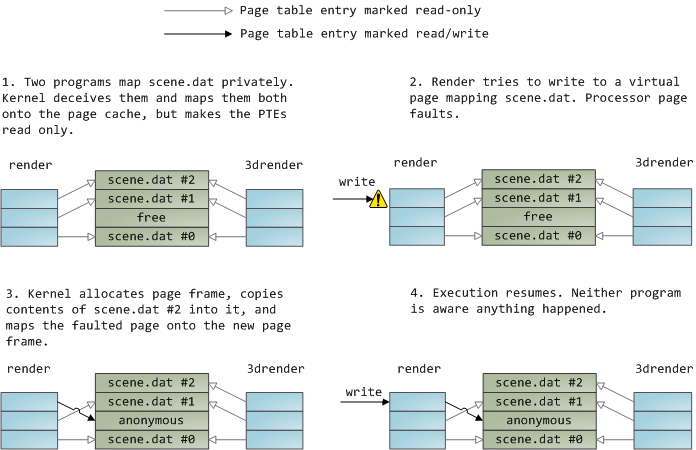

- #SHARED CACHE VS PRIVATE CACHE UPDATE#
- #SHARED CACHE VS PRIVATE CACHE FULL#
- #SHARED CACHE VS PRIVATE CACHE CODE#
Adding that cache was sufficient to buy the Pentium 4 EE a 10-20 percent performance boost over the standard Northwood line. You likely want to disable ETags for your static assets (js, css, images) and selectively use it for your application responses.By the turn of the century, slapping an additional 元 cache on a chip had become an easy way to improve performance - Intel’s first consumer-oriented Pentium 4 “Extreme Edition” was a repurposed Gallatin Xeon with a 2MB 元 on-die. This means all requests will make its way to the origin server. If you use Validation caching, and the cache (such as your browser!) supports it, the cache will likely ignore the expiration directives. Note: Validation caching typically over-rides Expiration caching. You may be able to with a Gateway cache, or with a private cache (aka, your client can figure out caching based on your expiration headers). Requests behind authentication and/or SSL are usually not cached.Using the Cache-Control header to set a response to 'public' will allow Proxy and Gateway caches to cache your site content.If you have a Gateway cache such as Varnish, you can potentially cache responses to end points per user A gateway cache gives you a lot of cache control since its part of your stack.This is good for APIs with a lot of writes (updates) to resources.ĭone with Expires, Cache-Control, Date and related headers, expiration caching can aid in caching a response for the next user (or even for one specific user) on subsequent page loads, saving your server(s) from traffic load
#SHARED CACHE VS PRIVATE CACHE UPDATE#
#SHARED CACHE VS PRIVATE CACHE FULL#

Which cache mechanisms you use depends on your use case. Making a response (web page, api-response, etc) cacheable is part of the HTTP cache mechanism. Your browser is a private cache it will cache responses unique to the sites you visit.

Because they are employed at a high-level, they can (and do) cache thousands of various websites.
#SHARED CACHE VS PRIVATE CACHE CODE#
Your code checks your in-app caches and determines if it should use them to retrieve data in order to fulfill the request. It takes action when a request makes its way to your server. It allows you to store objects in memory for quick retrieval. In-app caching lives in your infrastructure and interacts with your application code.


 0 kommentar(er)
0 kommentar(er)
